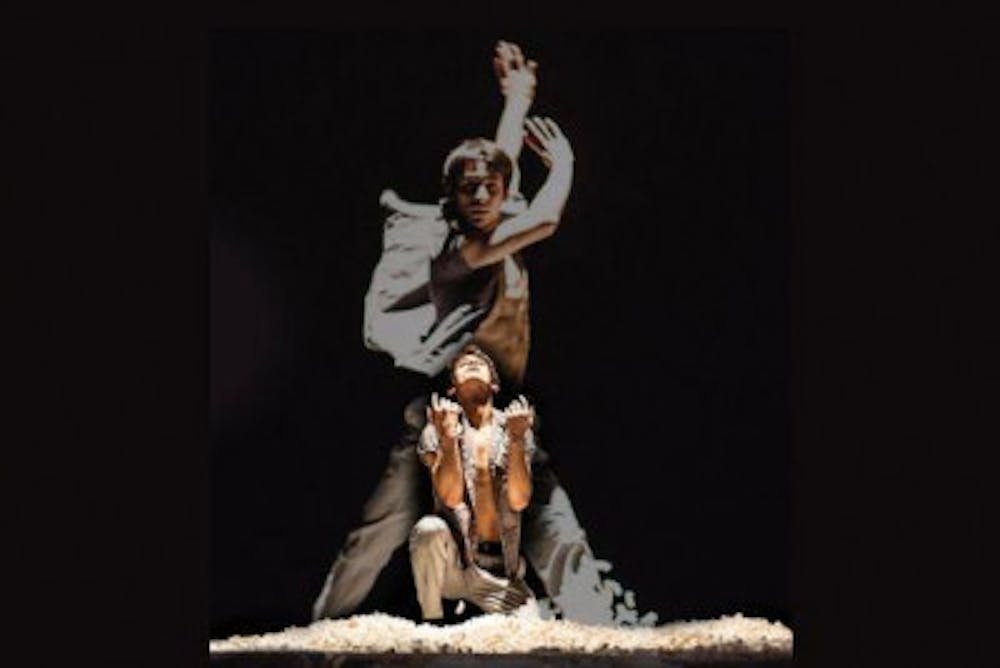Is ballet still relevant? In response to this question, Iyun Harrison, Associate Professor of the Practice of Dance, executive director of Ballet Ashani and the choreographer and director of the new ballet adaption of James Baldwin’s novel “Giovanni’s Room,” chuckled and answered “No.”
The glamourous ascendancy of kings, the sensational rumors of European nobility and adventures of daring princes – the stories of the classical ballet repertoire are salient in their elitism and exclusiveness, a realm reserved for exalted figures and heterosexual romance. In order to make ballet more relevant, Harrison searched for marginalized voices, and found them in “Giovanni’s Room.”
Published in 1956, “Giovanni’s Room” captures the tumultuous love affair of David, a young American expatriate unable to come to terms with his sexuality. Torn between his desire for the Italian bartender Giovanni and his need to fulfill the conventional idea of masculinity by marrying his fiance, Hella, his relationship with Giovanni ends with their tragic and permanent separation. Bridging the gap between classical ballet, literature and the contemporary conception of sexuality, Ballet Ashani reimagines Baldwin’s characters and brings life to present-day Paris.
The 85-minute long ballet, which opened Sept. 9, consists of 15 scenes that maintain the narrative of Baldwin’s novel while taking creative liberties to make the tragedy more relatable.
Among these creative liberties is the careful incorporation of mixed-media elements such as projection to better convey David’s torment. In a particularly devastating scene, the ensemble suffocates David using a sheet with a video of two men sleeping together projected onto it. Baldwin’s own words are another tool that the ballet smartly employs, with quotes from the novel often being played over the music at the beginning of scenes. One quote in particular, “I am ashamed,” echoes throughout the performance, demonstrating the persistence of David’s self-loathing.
The ballet is often subtle yet powerful. A simple brush of the hands somehow encapsulates paragraphs worth of Baldwin’s poetic prose, and the stunning pas de deux (duet) in which David and Giovanni consummate their relationship is a confluence of heart-wrenching intimacy and dogged shame.
What Harrison and his company have done with this story is no small feat—the ballet itself took over two years to craft, and most of the dancers learned the choreography just six weeks ago. Though Baldwin’s story centers around white people, a triumph of Harrison’s cast is that it is wonderfully diverse, with a Puerto Rican Giovanni and Black David, a fresh perspective that encourages the audience to see themselves in the characters.
For Harrison, making the ballet relevant is invaluable. “The theme [Baldwin] talks about translates immediately to this time,” commented Harrison. At the core of the work is a fear to love rooted in the internalization of homophobia. Living in progressive communities often give us a false conception of our societies’ inclusiveness, and the ballet seeks to problematize the idea that “everybody’s accepting of people of various sexualities.” Fusing modern fashion and music elements with Baldwin’s central message, Ballet Ashani presents the fluidity of sexuality and the societal pressure thrusted upon it.
Though Giovanni and David’s exploration of their sexuality and relationship takes center stage, the interactions Giovanni and David have with the ensemble and secondary characters of Hella, Jacques, and Guillaume are also extremely noteworthy. The ensemble often emerges from the wings as David’s demons of shame and, in other scenes, play the variegated citizens of Paris. Hella’s ethereal movements are a constant temptation to David, and their dances together are nothing short of stunning. Jacques and Guillaume, donning rat and pig masks, respectively, often guide David and Giovanni to each other and, at crucial moments, tear them apart. In the scene “Jacques Invites Temptation,” Jaqcues playfully flirts with a timid David, introducing him to the seduction of Parisian nightlife. In “Guillaume's Bar,” a similar, more sinister flirtation occurs as Guillaume attempts to sink his teeth into Giovanni. The show skillfully depicts Guillaume as both villain and victim. The final confrontation between him and Giovanni is staged as desperate and frantic, building to the dramatic crescendo of his death and Giovanni’s execution.
Aside from being a brilliant composition, the ballet is also a testament to the collaborative nature of Duke University. Harrison credits Duke with providing him with the resources to put on a production of this scale, and many other Duke professors and students have been involved with the project from the beginning.
As for what’s next for the production, Harrison, ever the artist, insists his work on this ballet is not over. There is talk of adapting the show for film, and Harrison is even considering adding a few more scenes.
Even without these additional scenes, Ballet Ashani’s “Giovanni’s Room” is a poignant and fresh success. Watching David cradle Giovanni after his death, the audience is left with a resounding sense of grief, not only for Giovanni’s loss of life, but for David’s loss of love. Harrison and his company successfully convey the debilitating nature of shame, proving through their spectacularly powerful movements that love and loss are often intertwined. Fear of love itself, the ballet seems to conclude, is almost the most devastating burden that we can carry.
Get The Chronicle straight to your inbox
Signup for our weekly newsletter. Cancel at any time.

